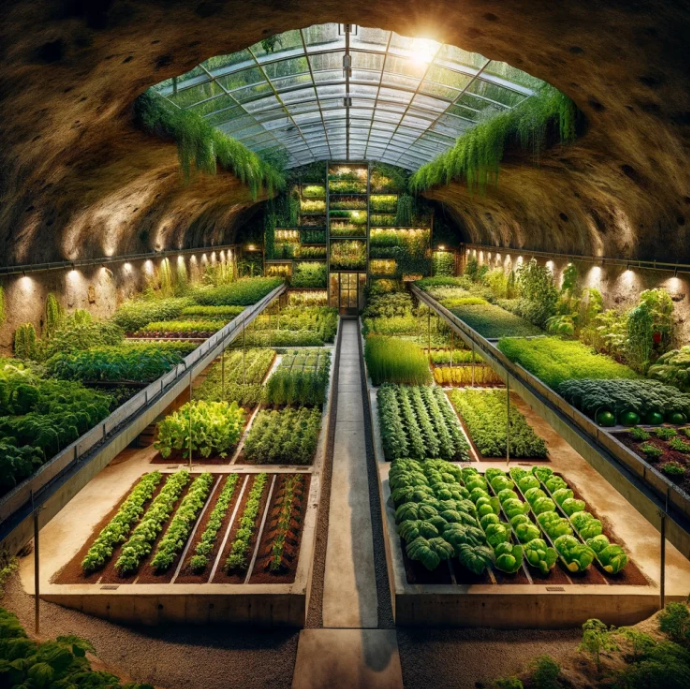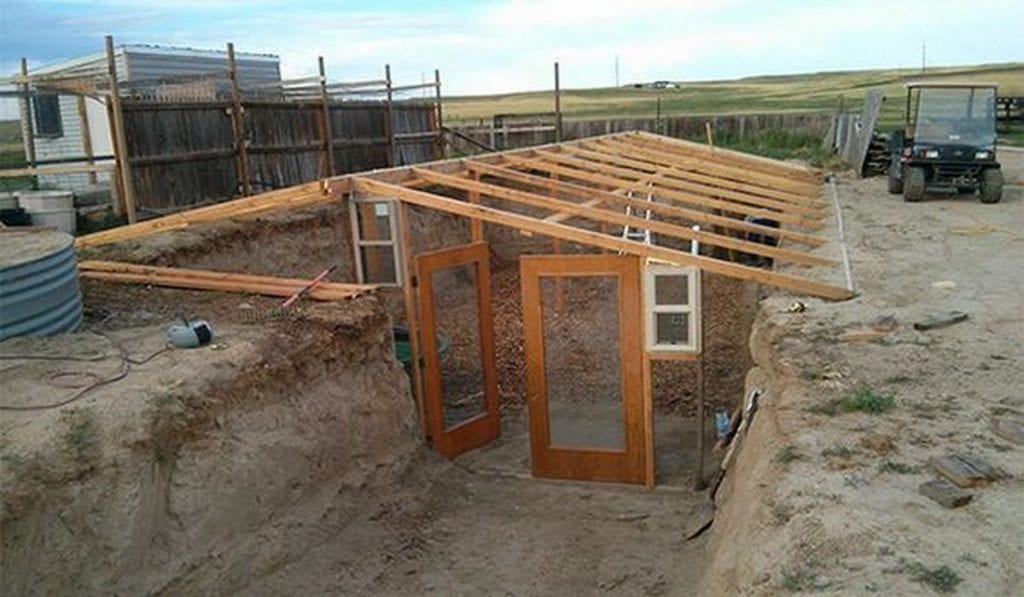Growing plants year-round, especially in cooler or fluctuating climates, can be a challenge. However, an underground greenhouse, also known as a ‘walipini’ or ‘pit greenhouse’, offers a sustainable solution. Leveraging the Earth’s natural insulation, these greenhouses maintain more consistent temperatures, protecting plants from harsh weather conditions and extending the growing season.

1. Advantages of an Underground Greenhouse:
- Thermal Stability: The earth has natural insulating properties. Even a few feet below the surface, the ground maintains a relatively stable temperature.
- Protection from Elements: Underground greenhouses are less exposed to wind, snow, and hail, thereby reducing the risk of damage.
- Extended Growing Season: The stable environment allows for cultivation even during cooler months.
- Sustainability: Requires less energy for heating due to natural insulation.
2. Choosing the Right Location:
- Sunlight: Find a location with maximum sun exposure. South-facing spots are ideal in the Northern Hemisphere, and north-facing in the Southern Hemisphere.
- Water Drainage: Ensure the site has good drainage to prevent water accumulation. Consider raised beds or gravel paths to aid drainage.
- Accessibility: Choose a spot that’s easily accessible year-round.
3. Building the Underground Greenhouse:
a. Excavation:
- Depth: Dig about 8-10 feet deep to benefit from the Earth’s insulation. The depth might vary depending on your region’s frost line.
- Width & Length: Depending on your needs. A standard size might be 10×20 feet, but adjust as necessary.
b. Walls:
- Construct walls using bricks, stones, or earthbags. Reinforce with concrete if needed.
- Insulate the northern wall to retain heat. You can use straw bales, foam insulation, or other insulating materials.
c. Roofing:
- Use UV-resistant greenhouse plastic, polycarbonate panels, or glass for the roofing.
- Ensure the roof is slanted to allow maximum sunlight and for rain and snow runoff.
d. Flooring:
- A gravel floor can enhance drainage. Optionally, you can use concrete or even maintain a natural soil floor, depending on preference.
e. Ventilation:
- Incorporate vents or windows on the roof or at the higher end of the sloping roof for hot air to escape.
- Consider adding a door at each end of the greenhouse for airflow and accessibility.
4. Maintaining the Underground Greenhouse:
- Monitoring: Regularly check temperature and humidity. Consider installing a thermostat.
- Pest Control: Due to its unique construction, an underground greenhouse might be more susceptible to certain pests. Regularly inspect and employ natural deterrents.
- Watering: Depending on the plants and the humidity, adjust your watering schedule. Remember, overwatering can cause drainage issues.
5. Additional Tips:
- Water Barrels: Place barrels of water inside the greenhouse. They absorb heat during the day and release it at night, stabilizing temperatures.
- Raised Beds: Using raised beds can help prevent waterlogging and root rot.
- Reflective Surfaces: Place reflective materials on the walls to maximize light distribution.
Conclusion:
An underground greenhouse can be a fantastic and sustainable way to grow plants year-round. Though it requires initial effort and investment, the rewards of fresh, home-grown produce even during colder months make it well worth the endeavor. Remember to regularly maintain and inspect your greenhouse to ensure the best growing conditions for your plants.










